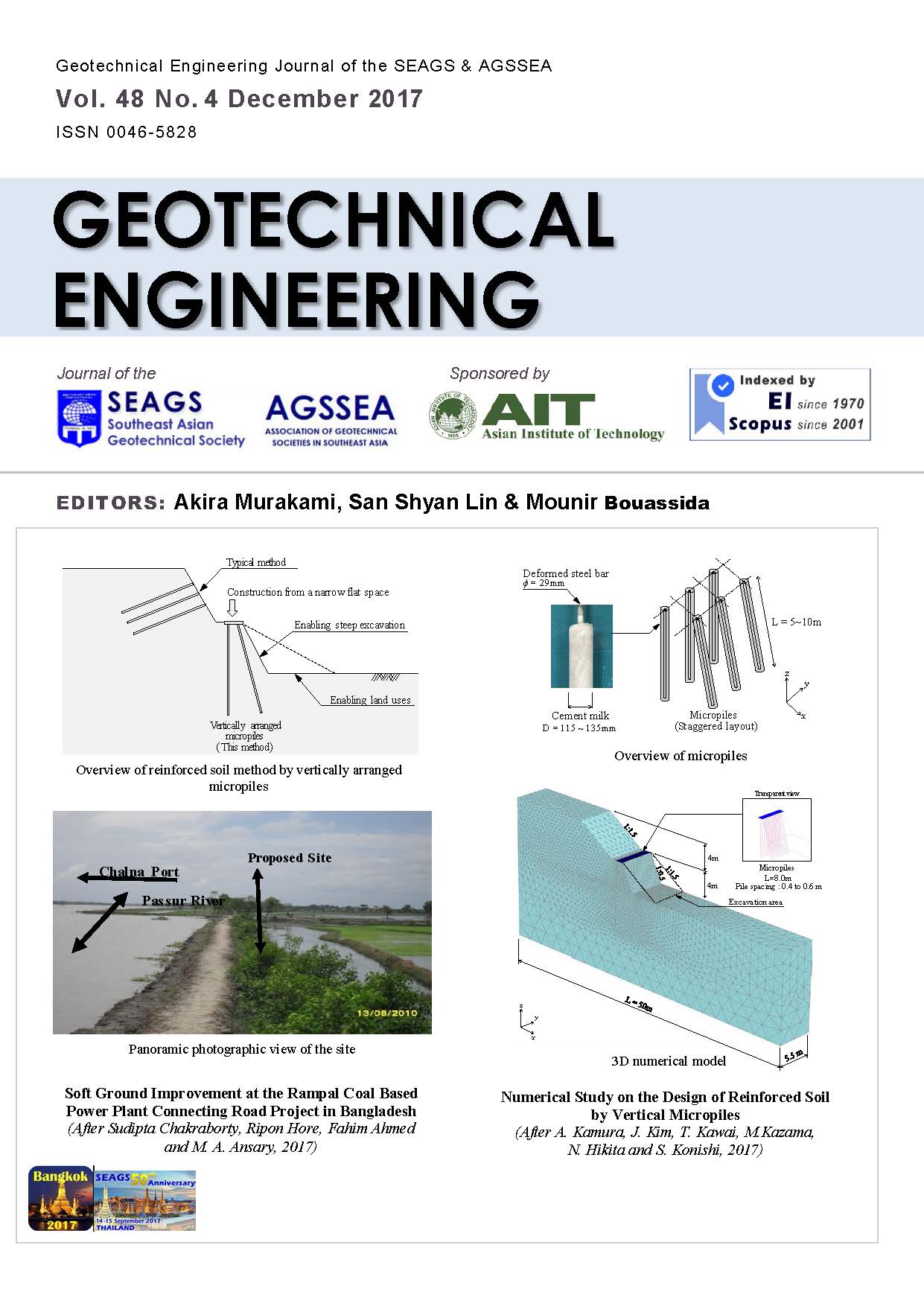Soil-water Coupled Analysis of Pore Water Pressure Dissipation in Performance Design – Examinations of Effectiveness in Reclaimed Ground
Main Article Content
Abstract
Japan has a large number of reclaimed regions unimproved against liquefaction and countermeasures in such regions are necessary to prepare for a great earthquake. A new macro-element method has been proposed that involves applying the soil-water-coupledfinite deformation analysis code GEOASIAwith an inertial term, and a numerical-analysis technique has been designed that quantitatively evaluates the improvement effect of the pore water pressure dissipation method (PWPDM). In this study, PWPDM effectiveness was examined for a reclaimed ground using the proposed method. Detailed examinations were conducted with the intention of developing a more advanced performance design, without being limited to the concept of the current design code. The main findings are as follows: 1) the proposed analysis code enables quantitative evaluation of the improved effectiveness of PWPDM in a reclaimed ground; 2) more advanced PWPDM designs are possible by not only suppressing the maximum excess pore water pressure to the permissible range of the current design code, but also evaluating the ground deformation adequately; and 3) the new macro-element method, capable of reproducing the phenomenon of well resistance, can evaluate the reduction in the improvement effect because of the degradation of drainage capability, thus making it useful for maintenance purposes such as drain clogging.
Article Details

This work is licensed under a Creative Commons Attribution-NonCommercial-NoDerivatives 4.0 International License.
Copyright © 2019 Association of Geotechnical Societies in Southeast Asia (AGSSEA) - Southeast Asian Geotechnical Society (SEAGS).

